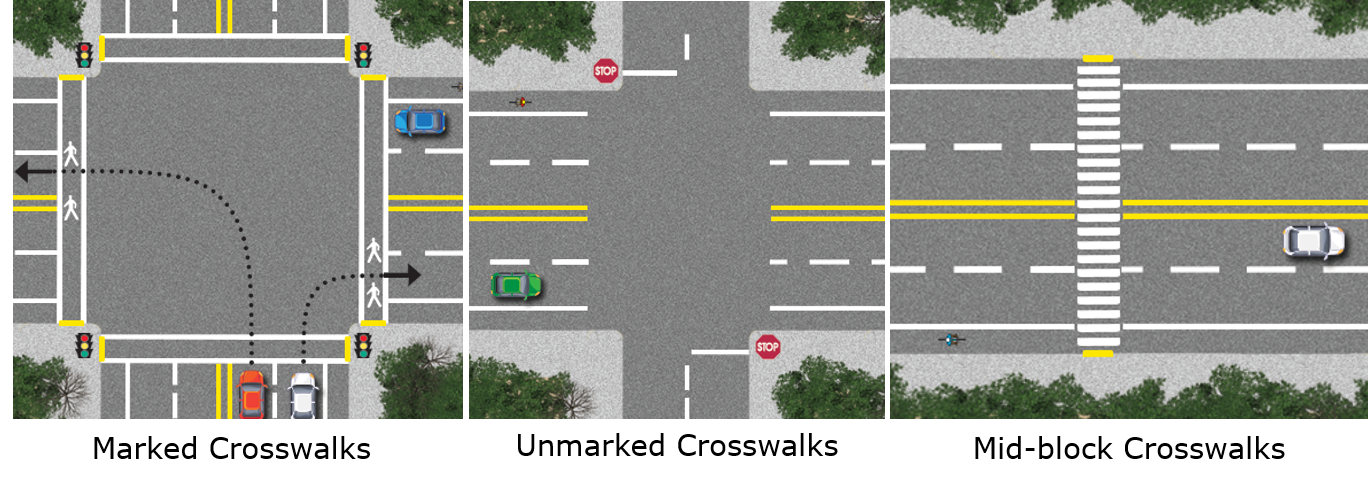Oregon, USA — As the population grows and roads become increasingly congested, understanding right-of-way laws is crucial for ensuring safety and reducing confusion on the roads. Oregon’s right-of-way laws, designed to guide drivers, pedestrians, and cyclists alike, play a vital role in maintaining order on the state’s busy streets. These laws establish who must yield in various traffic scenarios and aim to protect all road users, including vulnerable pedestrians and cyclists.
This article delves into the essential aspects of Oregon’s right-of-way laws, offering clarity on common situations and highlighting the penalties for violations.
Right of Way at Intersections
Intersections are among the most common places where right-of-way conflicts occur. According to the Oregon Department of Transportation, drivers must yield to the vehicle or pedestrian that arrives first at a four-way stop. When vehicles arrive simultaneously, the vehicle on the right has the right of way. Drivers turning left must yield to oncoming traffic and pedestrians crossing the street.
Roundabouts, a modern intersection alternative gaining popularity in Oregon, come with their own rules. Vehicles entering a roundabout must yield to traffic already circulating within it. Proper signaling before exiting is also required to ensure safe navigation.
Pedestrian and Cyclist Right of Way
Oregon places significant emphasis on protecting pedestrians and cyclists, who are classified as vulnerable road users. Under the state’s right-of-way laws, drivers must stop for pedestrians at marked and unmarked crosswalks. This rule is strictly enforced, especially in urban areas like Portland and Eugene.
Cyclists, on the other hand, enjoy the same rights and responsibilities as motor vehicles. However, they must follow additional rules when traveling in bike lanes or crossing intersections. Oregon law requires drivers to yield to cyclists in bike lanes, and failure to do so can result in hefty fines.
Pedestrians and cyclists are also required to follow specific guidelines. For instance, pedestrians must avoid stepping into traffic without allowing enough time for oncoming vehicles to stop, as outlined by Oregon’s Pedestrian Rights and Laws.
Highway and Freeway Merges
Navigating highway merges can be particularly challenging for drivers. Oregon law states that vehicles entering a freeway must yield to traffic already on the freeway. Conversely, vehicles exiting the freeway must ensure they merge safely into slower-moving traffic. While there is no specific requirement for freeway traffic to shift lanes to accommodate merging vehicles, it is considered a courteous practice that promotes smoother traffic flow.
Drivers are also reminded to adhere to the state’s “Move Over Law,” which requires motorists to yield and shift lanes when approaching stationary emergency vehicles, tow trucks, or disabled vehicles with flashing lights. This law aims to reduce the risk of accidents involving roadside workers.
School Zones and Emergency Vehicles
Oregon’s laws prioritize the safety of children and emergency responders. In school zones, drivers must yield to pedestrians and remain alert for children crossing, especially during designated hours. Speed limits in these zones are typically reduced, and failure to yield or stop can result in significant penalties.
Emergency vehicles, such as ambulances, fire trucks, and police cars, have absolute right of way when their sirens and lights are activated. Drivers are required to pull over to the right side of the road and stop until the emergency vehicle has passed. Not complying with this law is a serious offense under Oregon’s Emergency Vehicle Right of Way Regulations.
Penalties for Violating Right-of-Way Laws
Violations of Oregon’s right-of-way laws come with steep fines and, in some cases, additional consequences such as points on a driver’s license or mandatory traffic school. For instance, failing to stop for a pedestrian in a crosswalk can result in a fine of up to $265. More severe offenses, like failing to yield to an emergency vehicle, can lead to fines exceeding $1,000.
In addition to fines, repeated violations may lead to a suspension of driving privileges. Oregon’s authorities encourage drivers to familiarize themselves with the Oregon Driver Manual to better understand the rules and avoid costly mistakes.
Promoting Safety Through Awareness
Oregon has made efforts to raise public awareness of right-of-way laws through campaigns and driver education programs. Initiatives like the “Every Intersection is a Crosswalk” campaign aim to educate both drivers and pedestrians about their responsibilities. The state’s Department of Transportation continues to work closely with local governments and law enforcement to ensure compliance and enhance road safety.
Conclusion
Oregon’s right-of-way laws serve as a cornerstone of traffic safety, helping to prevent accidents and protect lives. From intersections and roundabouts to school zones and freeways, these rules define clear guidelines for drivers, cyclists, and pedestrians. By adhering to these laws and staying vigilant on the roads, Oregonians can contribute to a safer transportation environment for all.
For more detailed information, visit the Oregon Department of Transportation or consult the state’s traffic safety resources. Awareness and compliance with right-of-way laws are not just legal obligations—they are acts of civic responsibility.
Disclaimer – Our team has carefully fact-checked this article to make sure it’s accurate and free from any misinformation. We’re dedicated to keeping our content honest and reliable for our readers.








